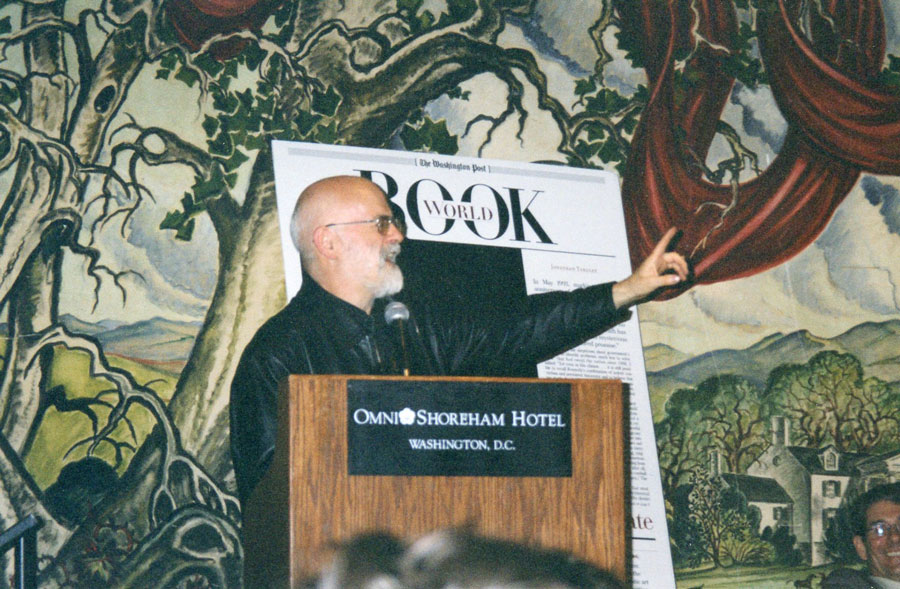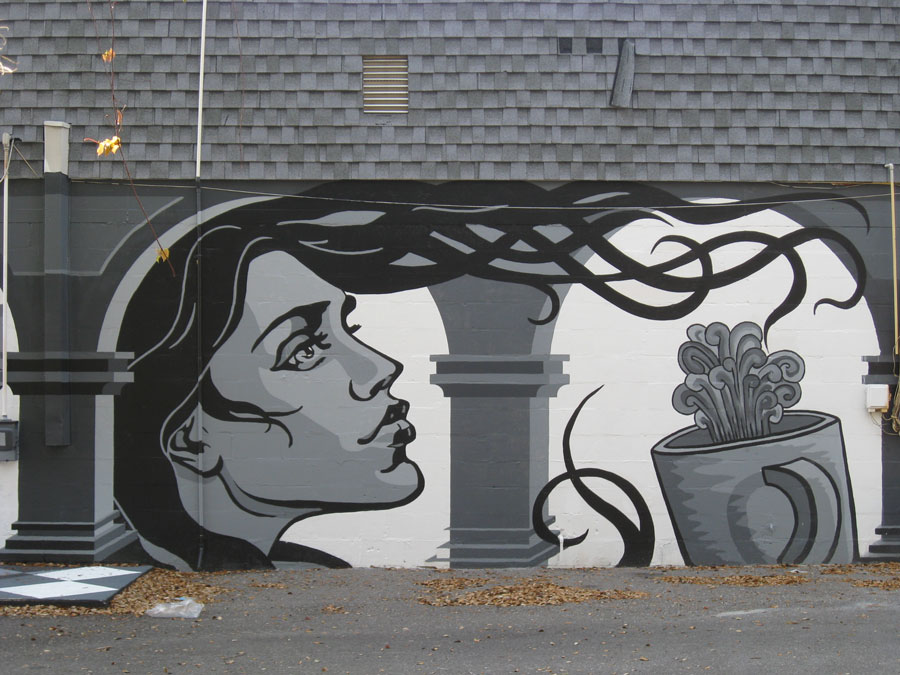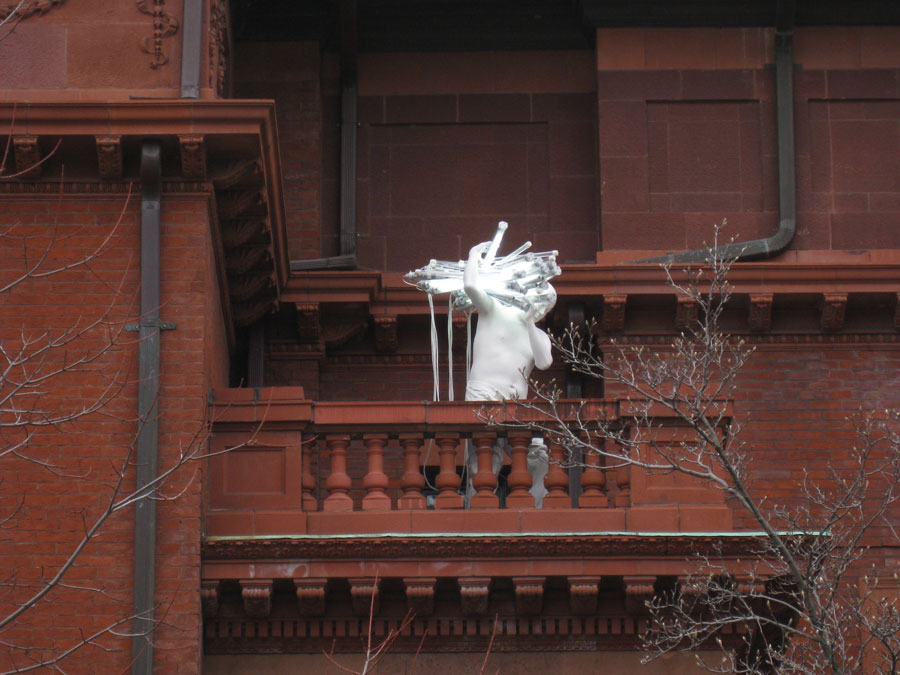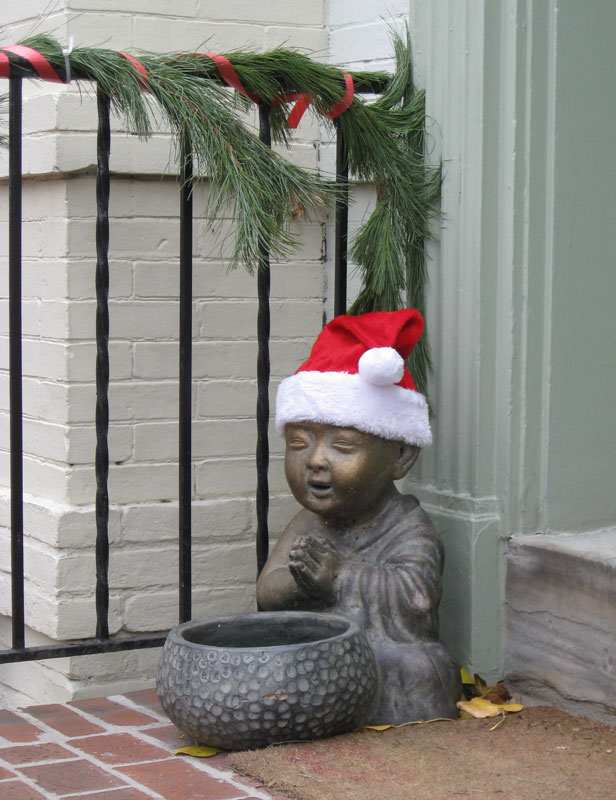
The flags will be flying at half-mast all over the Discworld today.
Yesterday the grand master of satirical fantasy, Sir Terry Pratchett, died at the age of 66.
The author of more than 70 books published worldwide and beloved by millions of fans, Sir Terry wrote literature that defies classification. While best-known for his creation of Discworld, a sort of alternate universe complete with wizards, witches, trolls, dragons and all the traditional fixin’s of the fantasy genre, Sir Terry upended that world with his brilliant wit, droll social commentary, and engaging cast of characters.
One of his most endearing characters was Death, who always spoke in all caps, and had a mordant sense of humor that cut straight to the bone.
My explorations of Discworld began in the early ’90s, soon after I read “Good Omens,” Sir Terry’s collaboration with Neil Gaiman, in which a plucky gang of kids averts Armageddon. A familiar story these days, but back then it was fresh, and no one had ever done it with more dark humor and hope.
The Discworld series brims with characters struggling to fight crime, poverty, gender discrimination, blood feuds, religious nuts, and rogue magic—all in a day’s work for the Night Watch in Ankh-Morpork, the city that never sweeps.
I’m grieving today, because Terry Pratchett made me laugh. So much.
It would be hard to pick one favorite among all his books, though the top five would likely include “Soul Music,” in which a young man’s rock and roll dream takes an unlikely turn, “Reaper Man,” in which Death takes a holiday, “Mort,” in which Death takes an apprentice, and “Wyrd Sisters,” in which we meet Granny Weatherwax and her partner in outside-the-box thinking, Nanny Ogg, who breathe new life into the tired tropes of witchery.
For these and many more I am deeply grateful to Sir Terry. There are few writers about whose work I feel so passionate. That’s why, when I learned in 2003 that he would be speaking in Washington, D.C., I had to go. At the time I lived in Fauquier County, a good hour’s drive away, and the event was on a weekday evening.
It was a gathering of fringe elements. Geeks and freaks who had been chuckling and grinning madly alone in their rooms for years emerged blinking into the light to offer praise to the master. The seats were filled with white-haired old ladies, blue-haired punks, obese loners hugging book bags stuffed with scribblings, lean academics and gnarly eccentrics, bubbly college girls and pimply adolescent boys with hungry eyes and insulting T-shirts.
The room was packed, standing room only. During the entire half-hour stage wait of buzzing anticipation the girl seated next to us read aloud without pause at breakneck speed from “Good Omens,” until finally we were delivered from her spell when a small man dressed all in black leather approached the podium.
And I was struck with a sudden horrible fear: what if TP turned out to be less than delightful? Of course I loved his writing, the dark fizzy outlook of his books, but what if in person he was small and mean? What if he was cold and self important? Or had an ugly voice? Or an annoying mannerism that dimmed his aura of perfection?
All these fears evaporated as he stood before the crowd—us cheering wildly, him raising his arms as if to raise the volume (which we did), then lowering them to get us to bring it down (which we did), then lifting one arm up and one down, to throw us into a state of confusion, where we merrily tumbled, cheering even louder. We loved him! We wanted to have his baby!
And when we obediently hushed, he began to talk, and his voice was perfect—English accent, but not snooty, more a kind of Python-ish shade of dry wit. He said so many funny insightful things in the next two hours that my smile muscles grew tired. He was kind, patient, wise, generous, and thoroughly entertaining.
Afterwards there was a book signing, a thing I usually avoid. But I wanted a chance to thank my hero for all the times his books had lifted the gloom that plagues my soul. So we got in line.
It was a long line. After the first hour, Sir Terry got up from his seat and walked in his stocking feet to the back of the long line to get a sense of how much work still lay ahead of him. As we neared the two hour mark we appeared to be no closer to him. Did I mention this was a school night? But I was determined, and I had given a lot of thought to what I would say. Just one line.
But when my turn finally came, and he reached for my book, he glanced up at me wearily and I was overcome with grief. I was so close, and he was too tired. I tried to say my line. He looked puzzled. He didn’t quite catch it. I repeated, “I wanted to thank you for lighting a flame-thrower in my life.”
Something jogged in his face. He looked up at me and said slowly, “Well, it’s better to light a flame-thrower…” I joined him to finish the line, “than to curse the darkness.”
I smiled as well as I could, holding back inexplicable tears. I owed this man so much. He lightened my sadness so many times.
In 2007, when he was diagnosed with a rare form of early-onset Alzheimer’s, I grieved, knowing this was the beginning of the end. I lost my mother to the disease in 1995, but she lost her memory years before she died. I’ll never forget her.
Millions of readers around the world will never forget Sir Terry Pratchett.










